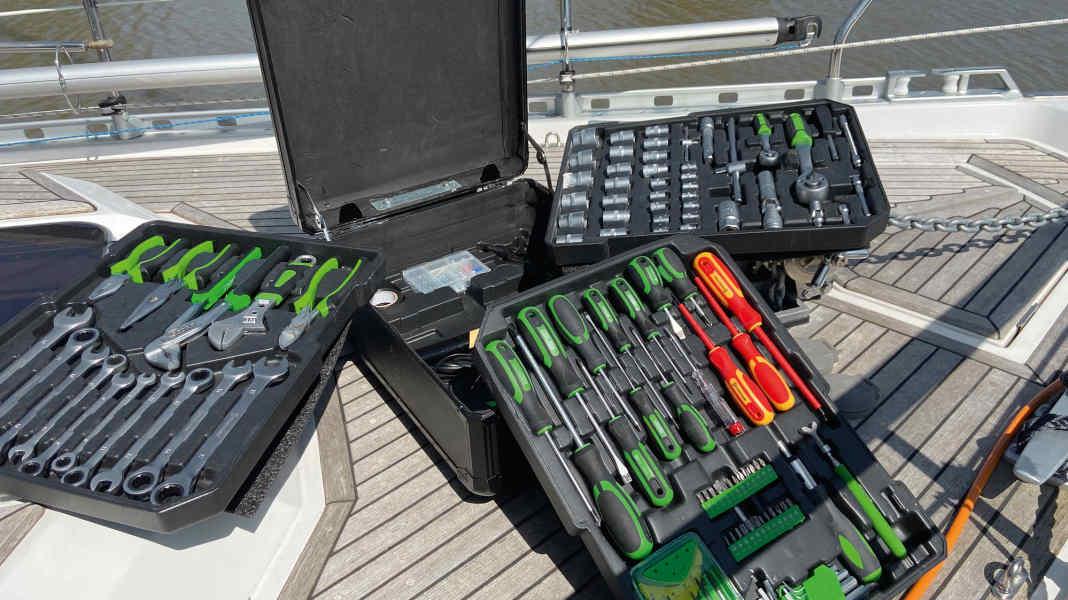
Whether the coat hook in the owner's locker comes loose from the wall, the valves on the engine need adjusting or a light bulb in the position light simply needs changing - tools are always needed on board. That's why almost every owner has accumulated a box of the most necessary tools over the years, which becomes more and more extensive over time. But as is often the case, when you need a particular tool, it is of course missing from your kit. Either because you've never needed it before or because you've "misplaced it somewhere".
There are inexpensive and very complete sets available in every DIY store and from many equipment suppliers, in which the most important tools are not only included but also have a fixed place, which can be very useful for keeping things organised on board. But are these toolboxes also suitable for use on board? Are their dimensions such that they fit easily into the cockpit locker, and do the boxes, which are often made of metal, harbour the risk of leaving a dent in the gelcoat when being handled on board? We took a look at some tool sets and got an overview.
awn - 93 parts, 249 euros:
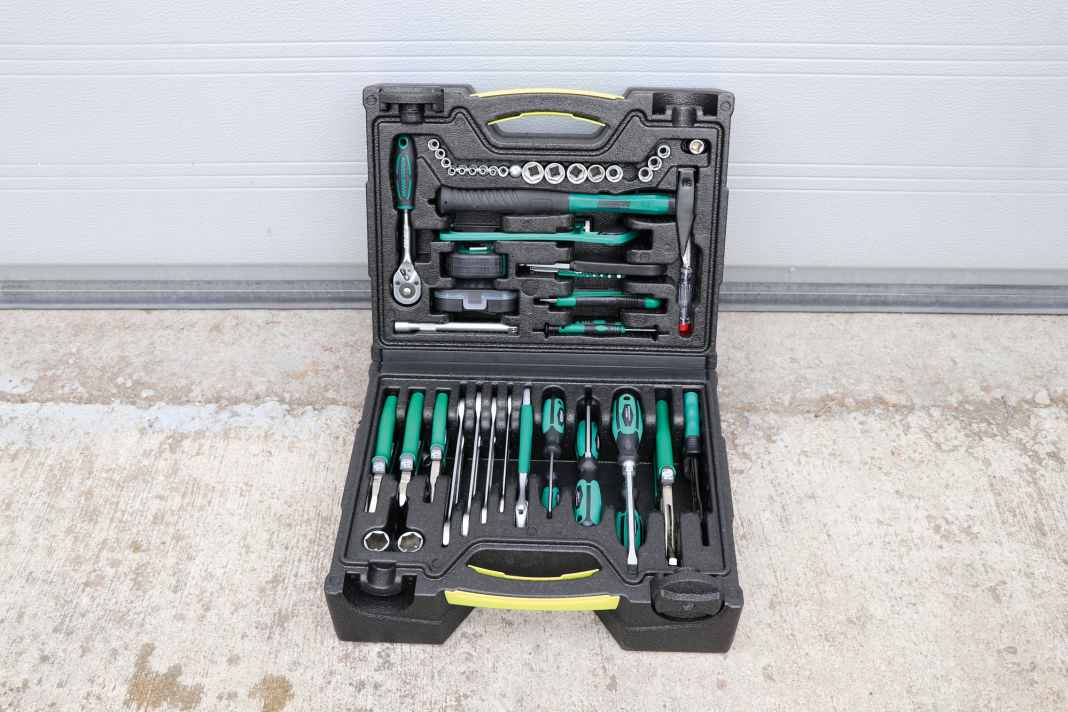





There are no limits to how much a complete tool set can cost. Some people buy their tools in the weekly special at the discount grocery store, others buy them from their favourite specialist retailer. For this comparison, we have looked at kits in the lower to medium price range between 85 and 249 euros, which are available from boat chandlers or online.
However, only two of the cases presented have been specially developed for use on board, which is reflected in the case material and features: The somewhat bulky but buoyant case from A.W. Niemeyer and the slightly larger but very flat case from Osculati. All the other cases have an assortment that is intended more for the average DIY enthusiast, but is also useful in broad terms on board. In addition to a hammer, a ratchet with nuts, some screwdrivers and spanners as well as side cutters and combination pliers, most boxes also have water pump pliers, a small saw, a cutter knife and similar items.
Compass - 115 parts, 99 euros:
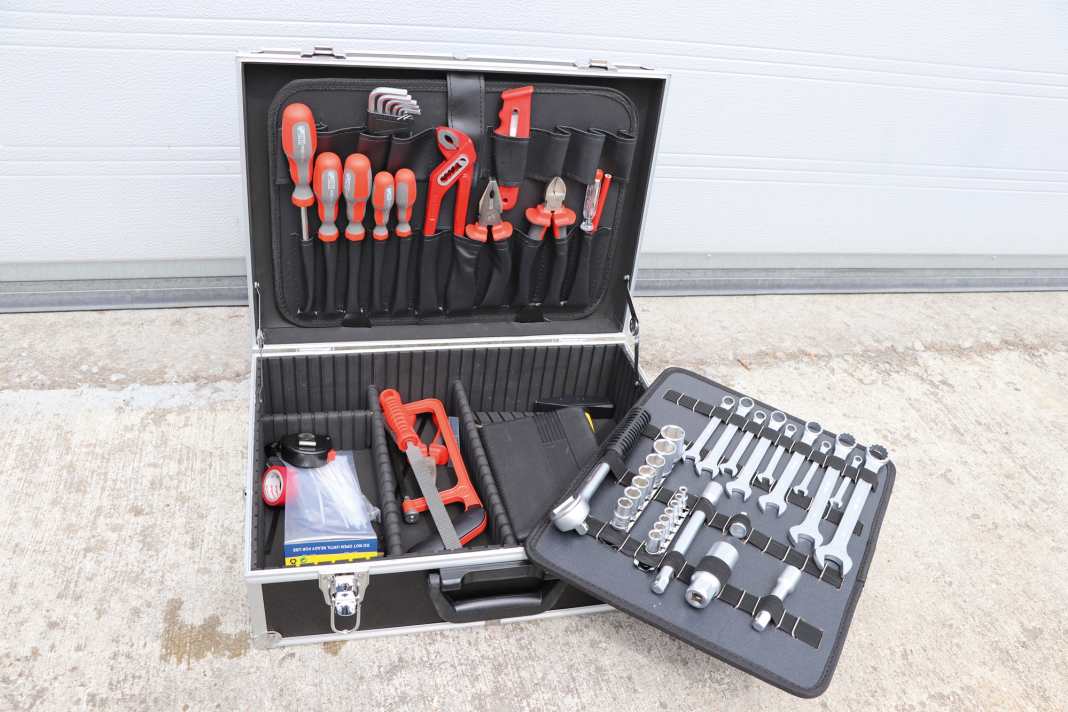




If you take a look around the market, you will usually notice the number of parts included, with which the boxes are advertised and compared. Of course, the buyer is happy to get as many things as possible for their money. But the number of parts alone is not a sign of quality - after all, what use is a phase tester or spirit level on board a boat? They can stay on land. Sometimes 50 of these listed parts are even cable ties ... A good tool set can therefore also be short on parts, as the example of the Osculati case shows. With 52 parts, it is far behind its competitors in the upper class in terms of the number of parts, but is still very well equipped without containing useless items. We therefore took a look at seven cases which, in our opinion, made a coherent impression.
Test results



Quality before quantity - and in terms of quality, we experienced some interesting surprises when comparing and testing some maintenance work carried out on an outboard motor. The composition of many kits is surprisingly mixed, and good tools are mixed with poor ones. While the spanners in the Famex box (Compass) are almost flattering in the hand and the bit set with special and rare wing nut bits and the like makes every screwdriver shine, the water pump pliers from the same range look almost nostalgic with their rickety function and non-insulated handles.
Gründl - 52 pieces, 149 euros:
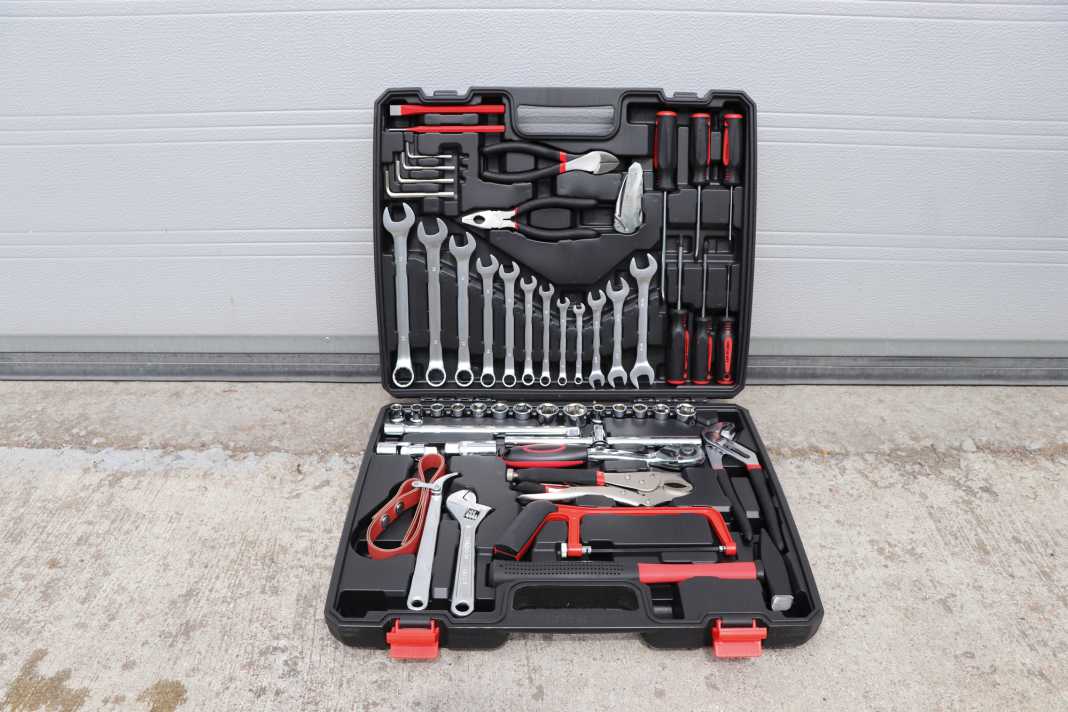





The quality of the cases also varies greatly. On the one hand, in terms of the case shell, which is either made of plastic, aluminium or even polystyrene, and on the other hand, how the tools are held inside. Almost all toolboxes were delivered pre-sorted. Except for the Famex box, in which the tools were sealed in bags and had to be sorted using a black and white photo. However, some of the pre-sorted boxes were shaken and thrown during despatch, which meant that the tools often had to be put back in their place. Depending on the design of the holders, this is not so easy. The boxes from Mannesmann and Meister are role models when it comes to organisation, as they have pre-shaped pockets with a picture of the tool printed on them. Others, on the other hand, only have a few straps behind which the tools have to be clamped. But what goes where? Without a plan, you sometimes feel like a toddler who has to match pictures to the corresponding outlines in a jigsaw puzzle. After the comparison, we now know that the children are being prepared for the later sorting of toolboxes ...
Nuts and pliers are often pressed into recesses that are milled or moulded into the inner shell of the case (plastic or foam). Plastic shells, such as the case from Osculati, often offer a very firm hold due to the clamp handle in the recess, which is manufactured with little tolerance, so that the tool does not fall out so quickly - the disadvantage, however, is often that the tool can only be levered out of the recesses with other tools. The solutions from Meister and Quantool, which hold the tool tightly in a foam bed that quickly gives way and releases the tool when pulled, perform better.
Mannesmann - 124 parts, 85 euros:
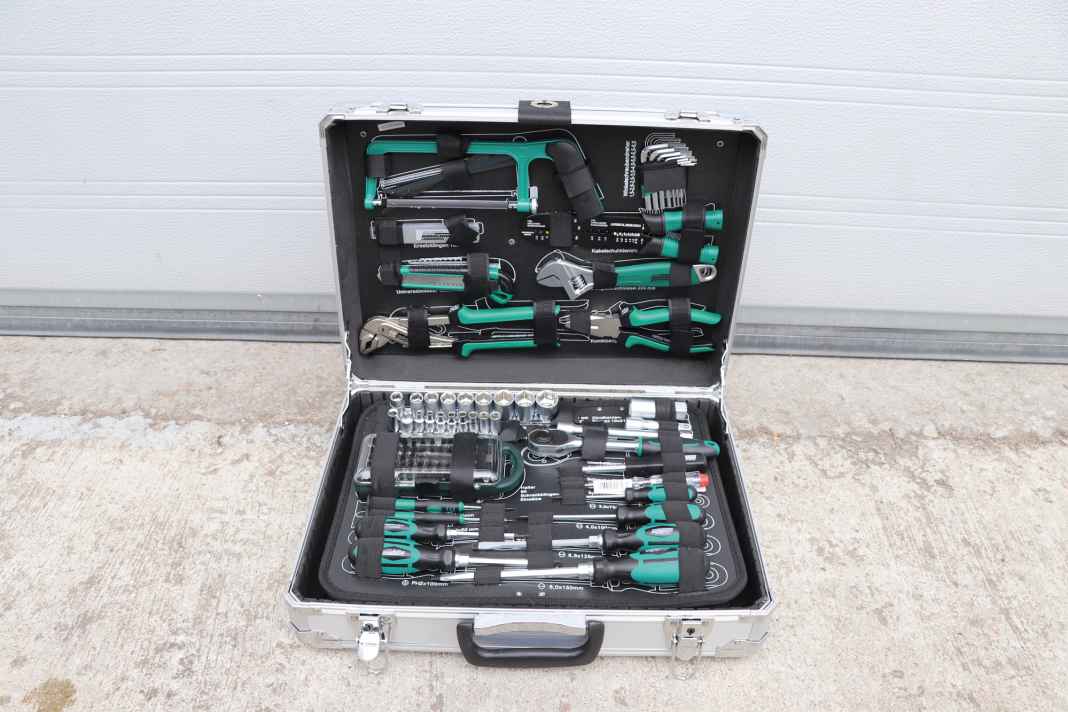





As the evaluation of the toolboxes must therefore be based on many aspects, we have also drawn up a very comprehensive evaluation table and organised it according to points such as the composition of the tool, the quality of the case and the hold of the tool in it, but also subjected the individual tool to a practical test.
According to the range, the cases from Osculati and AWN are best suited for use on boats - as you would expect, as they have been developed for this purpose. Both cases are soft and rounded on the outside so that they cannot cause any damage to the deck on board. In addition to good tools, the Osculati case also contains boat-specific extras such as an oil filter spanner, inch spanners (for American engines) and a Marl spanner, while the AWN case contains at least two spark plug sockets, which have obviously been sorted incorrectly as there are two of the same type. The tools from AWN are of high quality and already look very familiar after testing the other cases. No wonder, because the AWN tool also comes from Mannesmann. Unfortunately, both cases lack a small ratchet, which is very often helpful on board a boat in tight spaces if you can't get close enough to the screw with the large one. Two ratchets of 1/2 inch and 1/4 inch together with the corresponding sockets are ideal.
Quantool - 48 pieces, 139 euros:
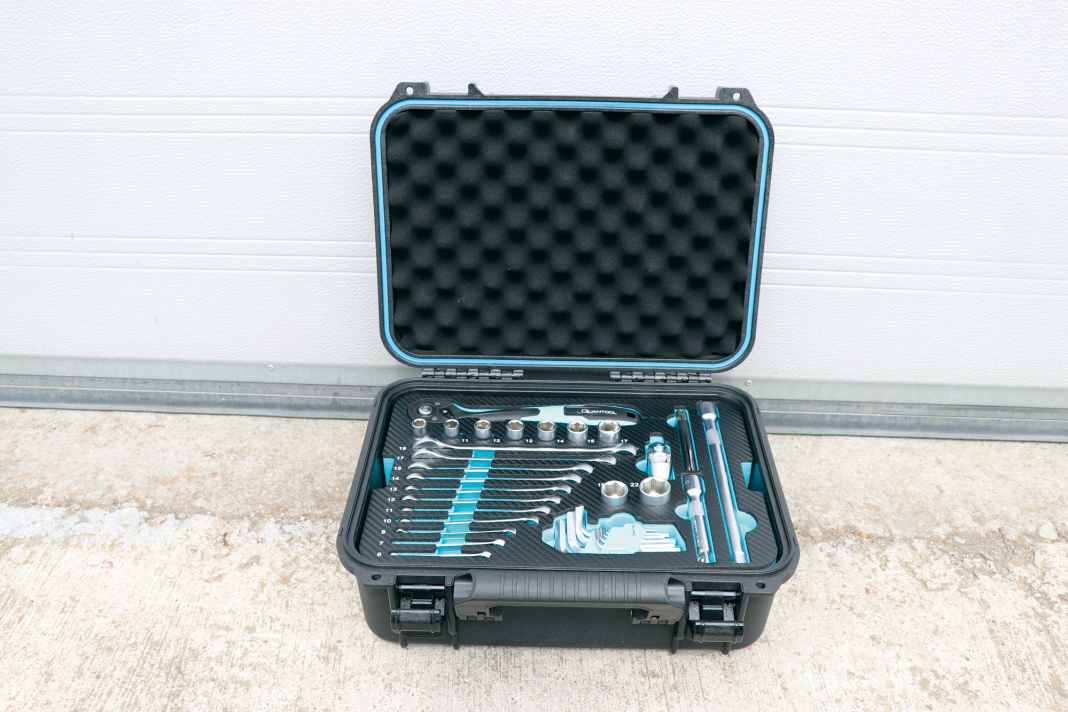





In the overall ranking, two cases are on a par: the larger case (159 parts) from Mannesmann and the case from Meister. Both have a very ingenious, clearly laid out, firm, but also easy to remove holding system consisting of pockets, straps and recesses, although Meister's foam recesses are slightly better than Mannesmann's plastic recesses. The pockets for the pliers at Meister are also a little firmer thanks to the additional elasticated strap. However, the aluminium case from Mannesmann is of a slightly better quality and more stable.
Some tools are also more comfortable to hold with Mannesmann. The screwdrivers in particular are more ergonomic to hold and allow you to turn a few more screws. But the Meister tools are by no means bad. The range in both cases is very complete. In addition to the usual tools, the case from Mannesmann contains callipers, tin snips, chisels, a punch and telescopic magnets - all useful items. The Meister case is similarly equipped, with Seegering pliers, precision mechanic's bit set, crimp connector, torch and spark plug socket.
Mannesmann - 159 parts, 162 euros:






In terms of quality, equipment and value for money, both cases are therefore a real recommendation for an owner who wants to be prepared for many eventualities. If you are an experienced screwdriver and have a large and a small torque spanner in your locker, there are few repairs that cannot be carried out with these two toolboxes.
If you already have a set of spanners on board, you can also opt for the small Mannesmann case for 85 euros. Apart from the spanners, it is quite complete and has storage space in the lower compartment for your own tools, such as a good pair of crimping pliers and a multimeter. For those who own a smaller and stylish trailer boat, the new Quantool case can be an attractive alternative, because with its 48 parts it is completely sufficient for the simplest repairs. The light blue foam bed with a top layer of carbon fibre-like plastic gives the set a very high-quality look, and the waterproof case prevents corrosion caused by salty air. What's more, at 139 euros, the case is even cheaper than its elegant appearance would suggest. Almost too good to use to repair an oily engine.
Meister - 159 parts, 159 euros:
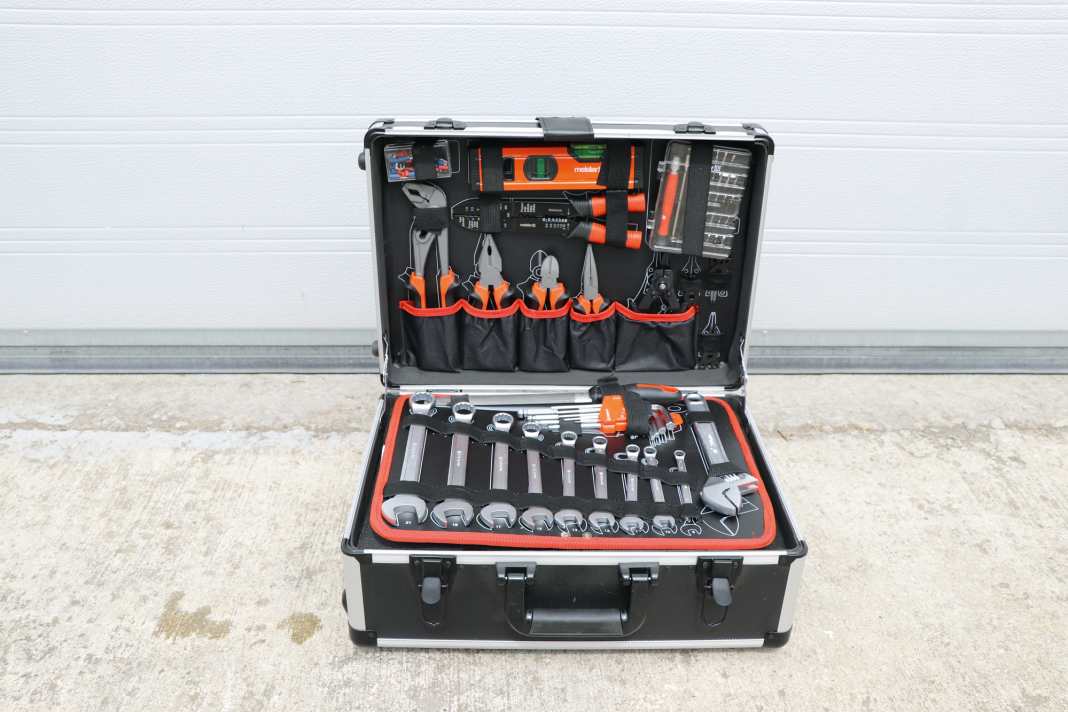





No matter which one - it's good to have a toolbox on board. After all, that's what boating is all about: repairing your boat in the most beautiful places in the world.

